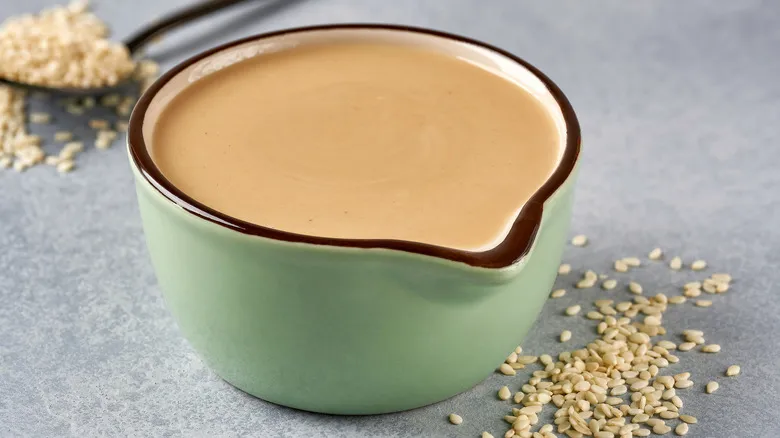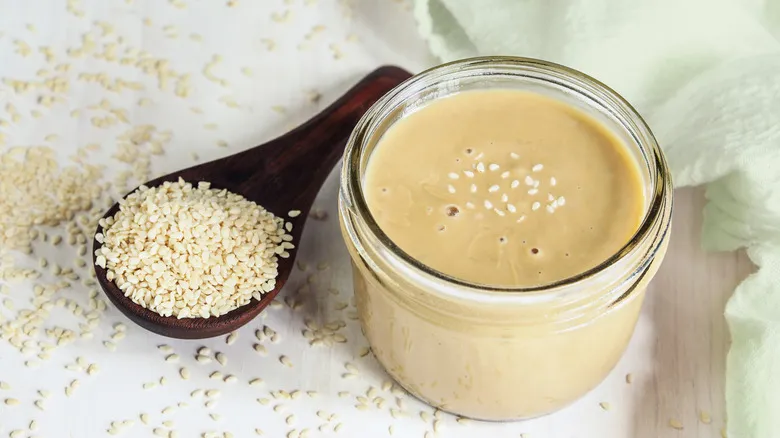Signs your tahini has gone bad

It's easy to tell when your tahini has spoiled, as any alteration in its original look, smell, taste, or quality serves as a clear warning sign. While it's not recommended, you could conduct a taste test if you're willing to risk ingesting bacteria. Just be careful not to mistake tahini's naturally bitter and savory flavors for spoilage. You'll recognize that the condiment has gone bad if it has a sharp or sour taste. However, before you even think about tasting it, an unpleasant odor will likely hit you first. Spoiled tahini will have a strong, rancid smell.
Visible mold growth is a definite sign that your sauce or paste should be thrown away. Another visual indicator of spoilage is separation. Similar to peanut butter, it's common for the oils in tahini to rise to the top of the jar. This separation can usually be remedied with a good shake, but if the solid and liquid refuse to blend back together, that's another reason to discard the product. The same applies to tahini that has become hard or dried out.
How to make your tahini last longer

The shelf life of tahini can be prolonged if you follow the right storage practices. The duration your jar remains good after opening—whether it's a few weeks or several months—largely depends on how you keep it. As a general rule, tahini can be treated similarly to peanut butter. It's advisable to store it in an airtight container with the lid tightly sealed. Keeping it in a cool, dark area away from moisture and heat is ideal.
Both the refrigerator and pantry are suitable storage options. A pantry or a closed cabinet will help maintain tahini's original texture, keeping it smooth, creamy, and ready for use. However, just as there are compelling reasons to refrigerate peanut butter, some people opt to store their tahini in the fridge for similar benefits. One reason is that it may help slow down oil separation. However, this cold storage comes with a downside: it can alter tahini's silky, pourable texture, resulting in a thicker consistency that makes it more like a spread. Additionally, you can freeze tahini in small portions and thaw only what you need right before use. Any of these storage methods will work well for your tahini; it ultimately depends on the texture you prefer for this condiment.
Recommended

12 Things You Didn't Know About Cranberry Sauce

The Secret To Make-Ahead Breakfast Burritos That Aren't A Soggy Mess

How To Store Avocado Oil For The Longest Possible Shelf Life

The Best Way To Freeze Canned Pumpkin For Later
Next up

